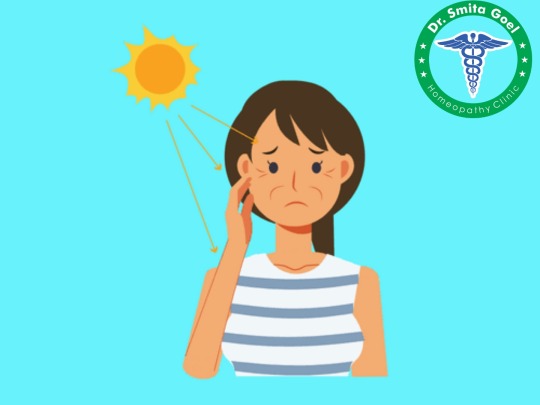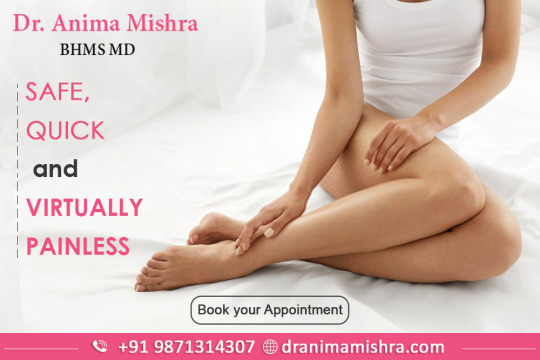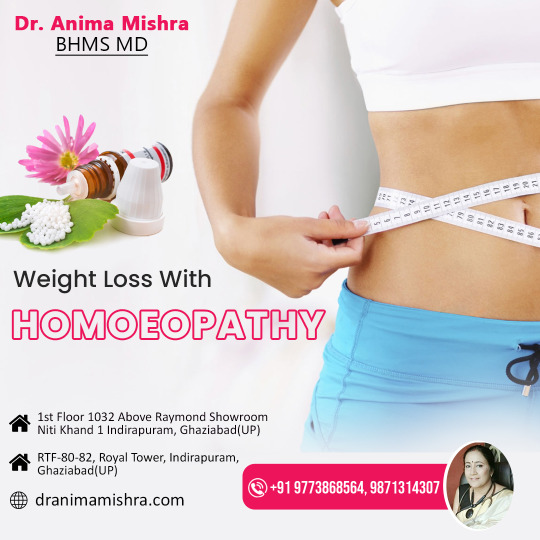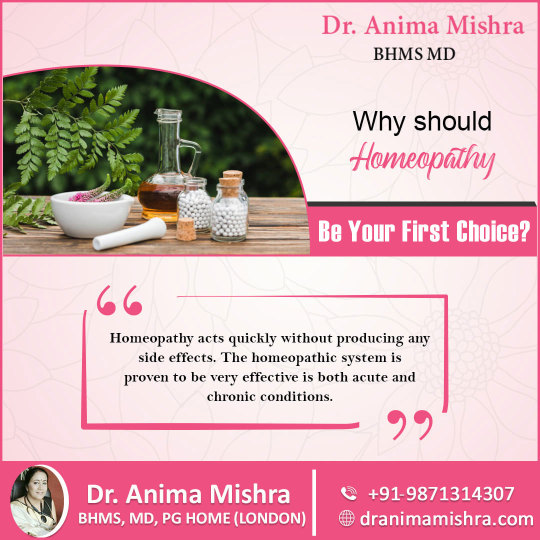#Homeo Clinic in Indirapuram
Text
Dr. Anima Mishra | Can homeopathy help with asthma?

Asthma, homoeopathic treatment is effective for managing symptoms when a person is under the care of a qualified health practitioner.
#Wart Removal Clinic in Indirapuram#Hair Removal Clinic in Indirapuram#Weight Loss Clinic in Indirapuram#Permanent Hair Removal Clinic in Indirapuram#Dr Anima Mishra#Homeo Clinic in Indirapuram#Laser Treatment in Indirapuram#Laser Hair Removal in Indirapuram#Hair Loss Treatment in Indirapuram#Dermatologist in Indirapuram#Best Dermatologist in Indirapuram#Skin Specialist in Indirapuram#Best Skin Specialist in Indirapuram#Best Homeo Clinic in Indirapuram#Best Homeopathy Clinic in Indirapuram#Best Homeopathic Clinic in Indirapuram#Homeopathy Specialist in Indirapuram#Best Homeopathy Specialist in Indirapuram#Cryolipolysis Clinic in Indirapuram#Tattoo Removal in Indirapuram#Anti Aging Treatment in Indirapuram#Hydra Facial Clinic in Indirapuram#Training center for Makeup courses in indirapuram#Training center for beauty courses in indirapuram#Training center for Hair courses in indirapuram#Weight Loss Clinic in Indirapauram#Anti Aging Treatment in Indirapauram#Asthma treatment clinic in Indirapuram#Asthma treatment in Indirapuram#Asthma homeopathy treatment in Indirapuram
0 notes
Text
*Dr. Smita Goel Homeopathy Clinic*
www.thehomeopathyclinic.co.in
*Sunburn* — red, painful skin that feels hot to the touch — usually appears within a few hours after too much exposure to ultraviolet (UV) light from sunshine or artificial sources, such as sunlamps.
Intense, repeated sun exposure that results in sunburn increases your risk of other skin damage and certain diseases. These include dry or wrinkled skin, dark spots, rough spots, and skin cancers, such as melanoma. You can usually find sunburn relief with simply home remedies. Sunburn may take several days or longer to fade.
You can prevent sunburn and related conditions by protecting your skin. This is especially important when you're outdoors, even on cool or cloudy days.
Symptoms
Sunburn signs and symptoms include:
Pinkness or redness
Skin that feels warm or hot to the touch
Pain, tenderness and itching
Swelling
Small fluid-filled blisters, which may break
Headache, fever, nausea and fatigue if the sunburn is severe
Any exposed part of your body — including your earlobes, scalp and lips — can burn. Even covered areas can burn if, for example, your clothing has a loose weave that allows ultraviolet (UV) light through. Your eyes, which are extremely sensitive to the sun's UV light, also can burn. Sunburned eyes may feel painful or gritty.
Signs and symptoms of sunburn usually appear within a few hours after sun exposure. But it may take a day or longer to know the full extent of your sunburn.
Within a few days, your body may start to heal itself by "peeling" the top layer of damaged skin. After peeling, your skin may temporarily have an irregular color and pattern. A bad sunburn may take several days or longer to heal.
When to see a doctor
See your doctor if the sunburn:
Is blistering and covers a large portion of your body
Is accompanied by a high fever, extreme pain, headache, confusion, nausea or chills
Doesn't improve within a few days
Also seek medical care if you notice signs or symptoms of an infection. These include:
Increasing pain and tenderness
Increasing swelling
Yellow drainage (pus) from an open blister
Red streaks leading away from the open blister.
*Causes*
Skin layers and melanin
Skin layers and melanin
Sunburns are caused by exposure to too much ultraviolet (UV) light. UV radiation is a wavelength of sunlight in a range too short for the human eye to see. Ultraviolet A (UVA) is the type of solar radiation most associated with skin aging (photoaging). Ultraviolet B (UVB) is associated with sunburn. Exposure to both types of radiation is associated with developing skin cancer. Sunlamps and tanning beds also produce UV light and can cause sunburn.
Melanin is the dark pigment in the outer layer of skin (epidermis) that gives your skin its normal color. When you're exposed to UV light, your body protects itself by accelerating the production of melanin. The extra melanin creates the darker color of a tan.
A suntan is your body's way of blocking the UV rays to prevent sunburn and other skin damage. But the protection only goes so far. The amount of melanin you produce is determined genetically. Many people simply don't produce enough melanin to protect the skin well. Eventually, UV light causes the skin to burn, bringing pain, redness and swelling.
You can get sunburn on cool, hazy or cloudy days. As much as 80 percent of UV rays pass through clouds. Snow, sand, water and other surfaces can reflect UV rays, burning your skin as severely as direct sunlight.
*Risk factors*
Risk factors for sunburn include:
Having light skin, blue eyes, and red or blond hair
Living or vacationing somewhere sunny, warm or at high altitude
Working outdoors
Mixing outdoor recreation and drinking alcohol
Having a history of sunburn
Regularly exposing unprotected skin to UV light from sunlight or artificial sources, such as tanning beds
Taking a drug that makes you more likely to burn (photosensitizing medications)
Complications
Intense, repeated sun exposure that results in sunburn increases your risk of other skin damage and certain diseases. These include premature aging of your skin (photoaging) and skin cancer.
Premature aging of your skin
Sun exposure and repeated sunburns accelerate the skin's aging process, making you look older than you are. Skin changes caused by UV light are called photoaging. The results of photoaging include:
Weakening of connective tissues, which reduces the skin's strength and elasticity
Deep wrinkles
Dry, rough skin
Fine red veins on your cheeks, nose and ears
Freckles, mostly on your face and shoulders
Dark or discolored spots (macules) on your face, back of hands, arms, chest and upper back — also called solar lentigines (len-TIJ-ih-neze)
Precancerous skin lesions
Precancerous skin lesions appear as rough, scaly patches in areas that have been damaged by the sun. They may be whitish, pink, tan or brown. They're usually found on the sun-exposed areas of the head, face, neck and hands of light-skinned people. These patches can evolve into skin cancer. They're also called actinic keratoses (ak-TIN-ik ker-uh-TOE-seez) and solar keratoses.
*Skin cancer*
Excessive sun exposure, even without sunburn, increases your risk of skin cancer, such as melanoma. It can damage the DNA of skin cells. Sunburns in childhood and adolescence may increase your risk of developing melanoma later in life.
Skin cancer develops mainly on areas of the body most exposed to sunlight, including the scalp, face, lips, ears, neck, chest, arms, hands and legs. Skin cancer on the leg is more common in women than in men.
Some types of skin cancer appear as a small growth or a sore that bleeds easily, crusts over, heals and then reopens. With melanoma, an existing mole may change or a new, suspicious-looking mole may develop. A type of melanoma called lentigo maligna develops in areas of long-term sun exposure. It starts as a tan flat spot that slowly darkens and enlarges.
See your doctor if you notice a new skin growth, a bothersome change in your skin, a change in the appearance or texture of a mole, or a sore that doesn't heal.
*Eye damage*
The sun can also burn your eyes. Too much UV light damages the retina, lens or cornea. Sun damage to the lens can lead to clouding of the lens (cataracts). Sunburned eyes may feel painful or gritty. Sunburn of the cornea is also called snow blindness.
*Prevention*
Use these methods to prevent sunburn, even on cool, cloudy or hazy days. And be extra careful around water, snow and sand because they reflect the sun's rays. In addition, UV light is more intense at high altitudes.
Avoid sun exposure between 10 a.m. and 4 p.m. The sun's rays are strongest during these hours, so try to schedule outdoor activities for other times. If you can't do that, limit the length of time you're in the sun. Seek shade when possible.
Avoid sun tanning and tanning beds. Using tanning beds to obtain a base tan doesn't decrease your risk of sunburn.
Cover up. When outside, wear a wide-brimmed hat and clothing that covers you, including your arms and legs. Dark colors offer more protection, as do tightly woven fabrics. Consider using outdoor gear specially designed to provide sun protection. Check the label for its ultraviolet protection factor (UPF), which indicates how effectively a fabric blocks damaging sunlight. The higher the number, the better.
Use sunscreen frequently and generously. Apply water-resistant sunscreen and lip balm with an SPF of 30 or greater and broad-spectrum protection against UVA and UVB rays. About 15 to 30 minutes before going outdoors, apply sunscreen generously on skin that won't be protected by clothing.
Put on more sunscreen every 40 to 80 minutes, or sooner if it has washed off from swimming or sweating. If you're also using insect repellent, apply the sunscreen first. The Centers for Disease Control and Prevention does not recommend products that combine an insect repellent with a sunscreen.
The Food and Drug Administration requires all sunscreen to retain its original strength for at least three years. Check the sunscreen labels for directions on storing and expiration dates. Throw sunscreen away if it's expired or more than three years old.
The American Academy of Pediatrics recommends using other forms of sun protection, such as shade or clothing, for babies and toddlers. Keep them cool and hydrated. You may use sunscreen on babies and toddlers when sun protective clothing and shade aren't available. The best products for them are those that contain physical blockers (titanium oxide, zinc oxide), as they may cause less skin irritation.
Wear sunglasses when outdoors. Choose sunglasses with UVA and UVB protection. Check the UV rating on the label when buying new glasses. Darker lenses are not necessarily better at blocking UV rays. It also helps to wear sunglasses that fit close to your face and have wraparound frames that block sunlight from all angles.
Be aware of medications that increase your sensitivity to the sun. Common drugs that make you more sensitive to sunlight include antihistamines, ibuprofen, certain antibiotics, antidepressants, antipsychotics and some cholesterol-lowering drugs. Talk with your pharmacist about your medication side effects.

#greater noida#best homeo clinic in indirapuram#homeopathy for ibs#ghaziabad#homeopathy clinics#homeopathy cold treatment in indirapuram#homeopathy doctor#best skin doctor in ghaziabad#homeopathy#homeopathy medicine#homeopathic treatment#homeopathy skin allergies treatment in indirapuram#homeopathy skin allergies treatment in noida#homeopathy specialist in indirapuram#homeopathy treatment#homoeopathy#ghaziabad latest news#ghaziabadnews#best schools in ghaziabad#ayurvedic doctor in ghaziabad#wave city ghaziabad#ghaziabadhealthcare
2 notes
·
View notes
Text

Hair loss is one of biggest problems faced by people these days and the solution for hair loss may vary according to the hair loss pattern. Keeping all this in mind, Dr. Anima Mishra, finest dermatologist in Indirapuram, offers the premium and highly customized, hair loss treatment in Indirapuram.
#Best Homeo Clinic in Indirapuram#Best Homeopathic Clinic in Indirapuram#Best Homeopathy Clinic in Indirapuram#Best Skin Specialist in Indirapuram#Children Diseases Treatment in Noida#Cryolipolysis Clinic in Indirapuram#Hair Loss Treatment in Indirapuram#Hair Removal Clinic in Indirapuram
0 notes
Text
Dr. Anima Mishra is a renowned dermatologist in Ghaziabad, known for her expertise in treating various skin conditions. With years of experience, she provides personalized care for issues such as acne, eczema, psoriasis, and more. Dr. Mishra's clinic is equipped with advanced technology, ensuring effective and efficient treatments. Her compassionate approach and dedication to patient well-being have earned her a reputation as one of the best dermatologists in the region. Whether you need routine skin care or specialized treatment, Dr. Anima Mishra offers comprehensive solutions tailored to your needs, making her a trusted choice for dermatological care in Ghaziabad.
0 notes
Text
Dr. Anima Mishra |Best Dermatologist in Indirapuram

Dr. Anima Mishra’s clinic is a prominent name when it comes to the best homeo clinic in Indirapuram. With years of experience and expertise, Dr. Anima Mishra provides highly customized and the most effective treatment to all her patients at this clinic.
0 notes
Text
Dr. Anima Mishra | Best Homeopathy Specialist in Indirapuram

Homoeopathy is one of the best hair loss treatments that can help your hair grow back after thinning. Best homeo clinic in Indirapuram.
#Training center for Makeup courses in indirapuram#Training center for beauty courses in indirapuram#Hair Removal Clinic in Indirapuram#Weight Loss Clinic in Indirapauram#Laser Treatment in Indirapuram#Laser Hair Removal in Indirapuram#Hair Loss Treatment in Indirapuram#Best Dermatologist in Indirapuram#Skin Specialist in Indirapuram#Best Skin Specialist in Indirapuram
0 notes
Link

Hair Removal Clinic in Noida provides the permanent and painless solution. The most effective way to eliminate unwanted facial hair as in the nose or on the chin is with a laser. The removal is done by the Best Homeopathic Skin Specialist in Noida. Dr Anima Mishra is the best dermatologist in Noida with a renowned experience. She is widely recognized for her specialized treatment for skin related issues. She is widely known as the best skin specialist in Noida. She also runs a training center for Makeup courses in Indirapuram.
#Hair Removal Clinic in Indirapuram#Homeo Clinic in Indirapuram#Best Homeopathy specialist in Indirapuram#Skin Specialist in Indirapuram#Permanent Hair Removal Clinic in Indirapuram#Hair Removal Clinic in Noida#Hair Removal Clinic in Delhi NCR#Hair Removal Clinic in Ghaziabad#Dr Anima Mishra#Skin Specialist in Noida#Skin Specialist in Ghaziabad#Skin Specialist in Delhi NCR
1 note
·
View note
Text
Dr. Anima Mishra | Best Homeopathy Specialist in Indirapuram

Homoeopathy is one of the best hair loss treatments that can help your hair grow back after thinning. Best homeo clinic in Indirapuram.
#Wart Removal Clinic in Indirapuram#Hair Removal Clinic in Indirapuram#Weight Loss Clinic in Indirapuram#Permanent Hair Removal Clinic in Indirapuram#Dr Anima Mishra#Homeo Clinic in Indirapuram#Laser Treatment in Indirapuram#Laser Hair Removal in Indirapuram#Hair Loss Treatment in Indirapuram#Dermatologist in Indirapuram#Best Dermatologist in Indirapuram#Skin Specialist in Indirapuram#Best Skin Specialist in Indirapuram#Best Homeo Clinic in Indirapuram#Best Homeopathy Clinic in Indirapuram#Best Homeopathic Clinic in Indirapuram#Homeopathy Specialist in Indirapuram#Best Homeopathy Specialist in Indirapuram#Cryolipolysis Clinic in Indirapuram#Tattoo Removal in Indirapuram#Anti Aging Treatment in Indirapuram#Hydra Facial Clinic in Indirapuram#Training center for Makeup courses in indirapuram#Training center for beauty courses in indirapuram#Training center for Hair courses in indirapuram#Weight Loss Clinic in Indirapauram#Anti Aging Treatment in Indirapauram#Asthma treatment clinic in Indirapuram#Asthma treatment in Indirapuram#Asthma homeopathy treatment in Indirapuram
0 notes
Text
*Dr. Smita Goel Homeopathy Clinic*
www.thehomeopathyclinic.co.in
Everyone has protein in their blood. The main protein in your blood is called albumin. Proteins have many important jobs in your body, such as helping to build your bones and muscles, prevent infection and control the amount of fluid in your blood.
Healthy kidneys remove extra fluid and waste from your blood, but let proteins and other important nutrients pass through and return to your blood stream. When your kidneys are not working as well as they should, they can let some protein (albumin) escape through their filters, into your urine. When you have protein in your urine, it is called proteinuria (or albuminuria). Having protein in your urine can be a sign of nephrotic syndrome, or an early sign of kidney disease.
Anyone can have protein in their urine. You may be more at risk for having it if you have one or more of the risk factors for kidney disease, such as:
• Diabetes
• High blood pressure
• Family history of kidney disease
When your kidneys are first starting to have problems, and you do not have a lot of protein in your urine, you will not notice any symptoms. The only way to know if you have protein in your urine is to have a urine test. The test for protein in the urine measures the amount of albumin in your urine, compared to the amount of creatinine in your urine. This is called the urine albumin-to-creatinine ratio (UACR). A UACR more than 30 mg/g can be a sign of kidney disease.
When your kidney damage gets worse and large amounts of protein escape through your urine, you may notice the following symptoms:
• Foamy, frothy or bubbly-looking urine when you use the toilet
• Swelling in your hands, feet, abdomen or face
If you are having these symptoms, your kidney damage may already be severe. Talk to your health care provider immediately about what may be causing your symptoms and what treatment is best for you.
If you have diabetes or high blood pressure, the first and second most common causes of kidney disease, it is important to make sure these conditions are under control by homeopathy.

#greater noida#best homeo clinic in indirapuram#homeopathy for ibs#ghaziabad#homeopathy clinics#homeopathy cold treatment in indirapuram#homeopathy doctor#best skin doctor in ghaziabad#homeopathy#homeopathy medicine#best homeopathy clinic in indirapuram#best homeopathy doctor#homeopathy skin allergies treatment in indirapuram#homeopathy skin allergies treatment in noida#homeopathy specialist in indirapuram#homeopathy treatment#laser treatment in indirapuram#skin specialist in indirapuram#indirapuram#child doctor in noida#child specialist in noida#noida news#nursery school in greater noida#greater noida west#noida#ghaziabad latest news#ghaziabadnews#ayurvedic doctor in ghaziabad#wave city ghaziabad#best schools in ghaziabad
2 notes
·
View notes
Text

According to a Homeopathy clinic in Indirapuram, Homeopathic medicines are considered to be safer than other medical treatment as they are derived mainly from plants.
When it comes to the best homeopathy specialist in Indirapuram, Dr. Anima Mishra is the first name that strikes everyone’s mind. She is practicing homeopathy for the last 23 years. With her expertise and experience, she provides the best care and treatment for all kinds of chronic and acute ailments.
#Best Homeo Clinic in Indirapuram#Best Homeopathic Clinic in Indirapuram#Best Homeopathy Clinic in Indirapuram#Best Skin Specialist in Indirapuram#Best Dermatologist in Indirapuram#Children Diseases Treatment in Noida#Cryolipolysis Clinic in Indirapuram#Hair Loss Treatment in Indirapuram#Hair Removal Clinic in Indirapuram#Homeopathy Specialist in Indirapuram#Hydra Facial Clinic in Indirapuram#Laser Hair Removal in Indirapuram#Laser Treatment in Indirapuram#Permanent Hair Removal Clinic in Indirapuram#Skin Specialist in Indirapuram#Tattoo Removal in Indirapuram#Weight Loss Clinic in Indirapauram
0 notes
Text
Dr. Anima Mishra | Best Homeopathy Specialist in Indirapuram

Dr. Anima Mishra is a homeopathy specialist in Indirapuram. She also runs a homeo clinic in Indirapuram and is known as the Best Dermatologist in Indirapuram. People prefer her for laser treatment in Indirapuram and hair loss treatment in Indirapuram. She is a skin specialist in Indirapuram and Best homeopathy specialist in Indirapuram.
0 notes
Text
Dr. Anima Mishra | Best Dermatologist in Ghaziabad

The search for the best homeo clinic in Indirapuram or homeopathy specialist in Indirapuram ends with Dr. Anima Mishra. With her years of experience and matchless expertise, she provides the best treatment for all kinds of ailments. She runs the best homeopathy clinic in Indirapuram.
#Weight Loss Clinic in Indirapauram#Laser Treatment in Indirapuram#Laser Hair Removal in Indirapuram#Hair Loss Treatment in Indirapuram#Best Dermatologist in Indirapuram#Skin Specialist in Indirapuram#Best Skin Specialist in Indirapuram#Hair Removal Clinic in Indirapuram
0 notes
Text
Dr. Anima Mishra | Best Homeopathy Specialist in Indirapuram

Dr. Anima Mishra, who is the best dermatologist in Indirapuram, runs a training center for hair courses in Indirapuram along with a training center for makeup courses in Indirapuram. She is also recognized for the best services at the training center for beauty courses in Indirapuram.
#Skin Specialist in Indirapuram#Permanent Hair Removal Clinic in Indirapuram#Best Dermatologist in Indirapuram#Best Homeo Clinic in Indirapuram#Best Homeopathic Clinic in Indirapuram#Homeopathy Specialist in Indirapuram#Cryolipolysis Clinic in Indirapuram#Anti Aging Treatment in Indirapuram#Hydra Facial Clinic in Indirapuram#Training center for beauty courses in indirapuram#Laser Treatment in Indirapuram#Laser Hair Removal in Indirapuram#Hair Loss Treatment in Indirapuram
0 notes
Text
*DR. SMITA GOEL HOMEOPATHY CLINIC*
www.thehomeopathyclinic.co.in
Insomnia is a sleep disorder that is characterized by difficulty falling and/or staying asleep. People with insomnia have one or more of the following symptoms:
• Difficulty falling asleep
• Waking up often during the night and having trouble going back to sleep
• Waking up too early in the morning
• Feeling tired upon waking
Types
• Primary insomnia: A person is having sleep problems that are not directly associated with any other health condition or problem.
• Secondary insomnia: A person is having sleep problems because of something else, such as a health condition; pain; medication they are taking; or a substance they are using.
Acute vs. Chronic
Insomnia also varies in how long it lasts and how often it occurs. It can be short-term or can last a long time. It can also come and go, with periods of time when a person has no sleep problems. Acute insomnia can last from one night to a few weeks. Insomnia is called chronic when a person has insomnia at least three nights a week for three months or longer.
Causes
• Significant life stress
• Illness
• Emotional or physical discomfort
• Environmental factors like noise, light/ extreme temperatures that interfere with sleep
• Some medications may interfere with sleep
• Interferences in normal sleep schedule
• Depression and/or anxiety
• Chronic stress
• Pain or discomfort at night
Symptoms
• Sleepiness during the day
• General tiredness
• Irritability
• Problems with concentration or memory
Homeopathy has a good treatment.

#greater noida#best homeo clinic in indirapuram#homeopathy for ibs#ghaziabad#homeopathy clinics#homeopathy cold treatment in indirapuram#homeopathy doctor#best skin doctor in ghaziabad#homeopathy#homeopathy medicine#laser treatment in indirapuram#best homeopathy clinic in indirapuram#best homeopathy doctor#homeopathy skin allergies treatment in indirapuram#homeopathy skin allergies treatment in noida#homeopathy specialist in indirapuram#homeopathy treatment#skin specialist in indirapuram#indirapuram#ghaziabad latest news#ghaziabadnews#ayurvedic doctor in ghaziabad#best schools in ghaziabad#wave city ghaziabad#child doctor in noida#child specialist in noida#noida news#nursery school in greater noida#greater noida west#mayurvihar
2 notes
·
View notes
Text

Dr. Anima Mishra is a homeopathy specialist in Indirapuram. She also runs a homeo clinic in Indirapuram and is known as the Best Dermatologist in Indirapuram. People prefer her for laser treatment in Indirapuram and hair loss treatment in Indirapuram. She is a skin specialist in Indirapuram and Best homeopathy specialist in Indirapuram.
The search for the best homeo clinic in Indirapuram or homeopathy specialist in Indirapuram ends with Dr. Anima Mishra. With her years of experience and matchless expertise, she provides the best treatment for all kinds of ailments. She runs the best homeopathy clinic in Indirapuram.
#Best Homeo Clinic in Indirapuram#Best Homeopathic Clinic in Indirapuram#Best Homeopathy Clinic in Indirapuram#Best Skin Specialist in Indirapuram#Best Dermatologist in Indirapuram#Children Diseases Treatment in Noida#Cryolipolysis Clinic in Indirapuram#Hair Loss Treatment in Indirapuram#Hair Removal Clinic in Indirapuram#Homeopathy Specialist in Indirapuram#Hydra Facial Clinic in Indirapuram#Laser Hair Removal in Indirapuram#Laser Treatment in Indirapuram#Permanent Hair Removal Clinic in Indirapuram#Skin Specialist in Indirapuram#Tattoo Removal in Indirapuram#Weight Loss Clinic in Indirapauram
0 notes